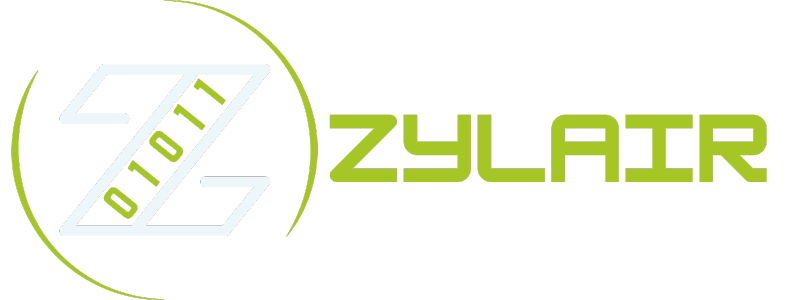How a small oversight almost turned into a big catastrophe
I vividly remember the morning I walked into the factory to find the Health and Safety Manager with a rather grim expression, clipboard in hand. Like most manufacturing professionals, safety audits weren’t exactly the highlight of my week. Necessary, sure, but I used to dread the countless hours spent chasing paperwork, tracking down missed checklists, and politely ‘nudging’ team members to capture critical data. But that morning turned out to be my wake-up call.
It seemed one simple machine safety check had been inadvertently missed—nothing inherently unusual. But this time, that oversight nearly had serious consequences when a critical emergency stop system failed during a routine operation. Thankfully, quick thinking from the operator avoided injury, but it became alarmingly clear: our process was broken and something needed to change.
The hidden cost of paper-driven chaos
Upon reflection, the problem wasn’t the staff or their training. Our safety processes had become victim to their own complexity. Paper checklists were misplaced or left incomplete. Manual input errors compounded, wasting hours each week. In the end, a variety of reports from audits ended up neglected in a dusty filing cabinet, until something urgent forced us to track them down.
As Engineering Manager, I realised we were wasting valuable productivity chasing documentation instead of addressing real hazards. Every hour spent deciphering hastily-written forms and checking stacks of audit results could have been invested in operational improvements, staff communications, and genuine risk management.
It got me thinking: surely in the age of Industry 4.0, we weren’t still relying on clipboards and elastic bands to keep everything compliant? The hidden cost was enormous—in terms of human risk, the sheer stress levels, labour inefficiencies, and even potential liability. Our manual, outdated method was more than an inconvenience; it was an unseen barrier that stopped us fully committing to proactive safety and continuous improvement.
How adopting automation changed the game
I knew we had reached a tipping point—we had to embrace technology. And if you’re thinking automation is just another fancy buzzword or overly expensive system—you’d be right to be wary. For too long I’d been sceptical myself, imagining complicated software that no one would actually bother using. But when I finally implemented a practical and straightforward EHS automation solution, it immediately clicked into place.
Specifically, we deployed a simple digital safety compliance software. It sat comfortably within our existing workflows, accessible via smartphones and tablets that our team were already familiar with using. No steep learning curves, no frustrating training hurdles—just clear digital checklists, automated reminders, and effortless data logging. This allowed every safety audit, check and observation to feed straight back into a real-time dashboard. Finally, we could instantly spot trends, issues, and escalate issues immediately, not two weeks later.
Your shift supervisor spots a damaged guard rail? They photograph and log it in seconds. An operator notices increased friction in machinery? They raise immediate action via an intuitive form. Automated alerts go straight to relevant Maintenance or Health and Safety team members—no extra emails needed. The dreaded paper chase was banished overnight.
Adopting automation didn’t mean costly, complex systems I’d once feared. Instead, it slotted seamlessly into our work routines, almost invisible in its simplicity, but exceptionally powerful in its impact. Safety had finally joined the digital age.
Getting back hours of time—and some peace of mind
What happens when you finally eliminate the confusion, delays, and stress of manual safety audits? Well, for starters, you regain precious hours for yourself, your staff, and the Health and Safety team.
Where previously audits took hours of preparation, chasing paperwork, and deciphering scrawl-like handwriting, now we performed them smoothly within our usual operating rhythms—taking mere minutes rather than hours. Automated reminders and digital checklists instantly created clear, traceable, actionable audit trails.
Additionally, we saw a tangible reduction in near-misses and incidents. Operators could report safety concerns immediately, resulting in quicker preventative actions. We finally had a proactive process rather than a reactive scramble.
But most of all? I noticed genuine team morale and engagement improvements. Nobody was rushing around last minute, worrying they’d missed something critical that would land them—or the whole organisation—in trouble. There was a quiet confidence building in knowing we had a complete overview of all hazards, audit results, trends, and corrective measures right under our fingertips.
Automation freed our time, reduced hotchpotch manual work, eliminated repetitive, boring admin—and dramatically cut down stress levels. Today, audits are no longer something I dread but something that genuinely adds value. We can focus on proactive solutions and maintaining consistent safety standards, instead of firefighting hidden issues.
If you’re currently still stuck running around with checklists, breaking into sweats over missed paperwork, or facing the unnerving reality of incidents slipping through the gaps, perhaps EHS automation can be your wake-up call too. Because frankly, your job is stressful enough already—without clinging desperately to outdated methods the manufacturing industry has thankfully long outgrown.
Together as manufacturing engineers and Health and Safety Managers, we owe it to our teams to learn from past oversights. Luckily, the game has changed—and you don’t have to dread another audit day again.




